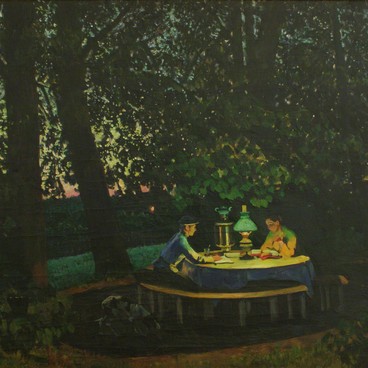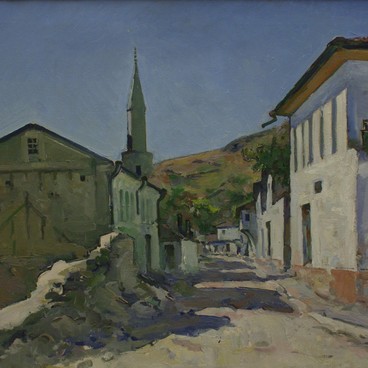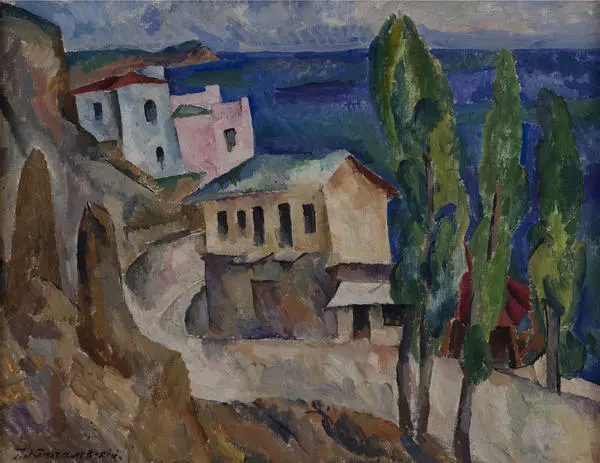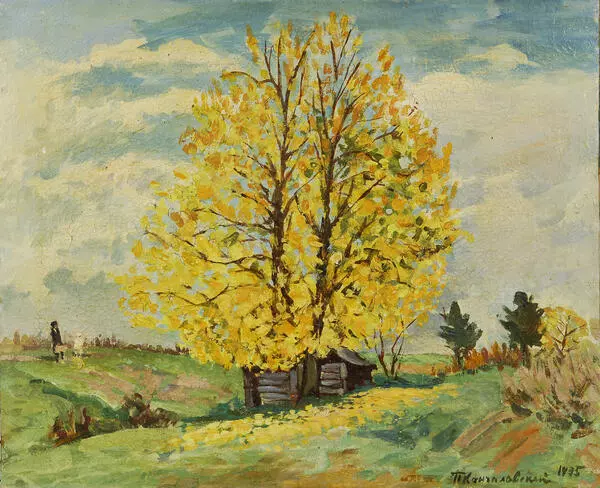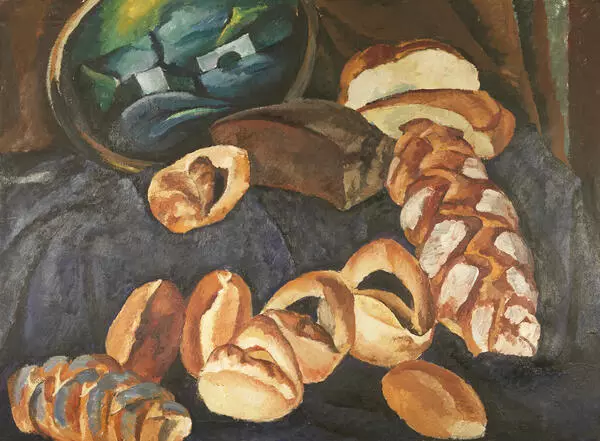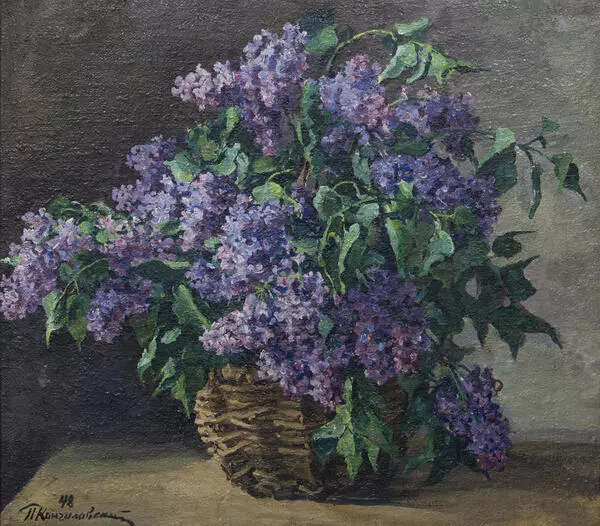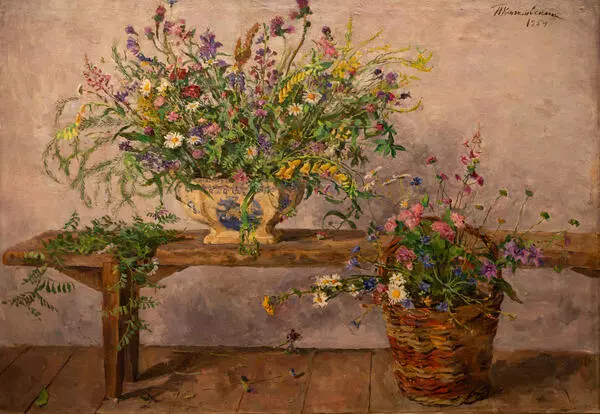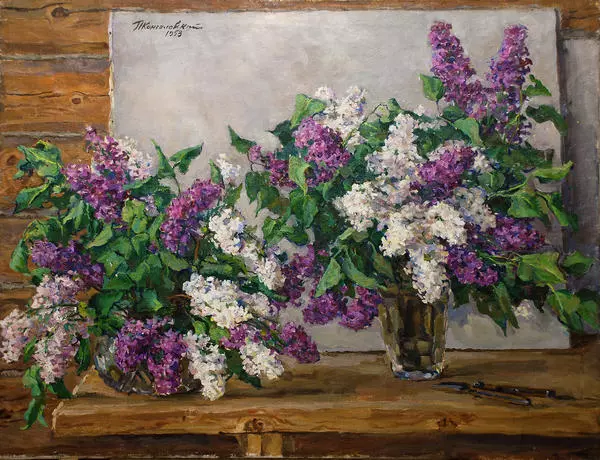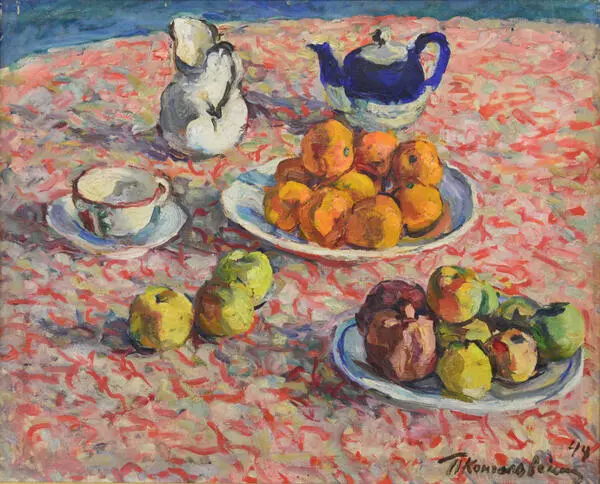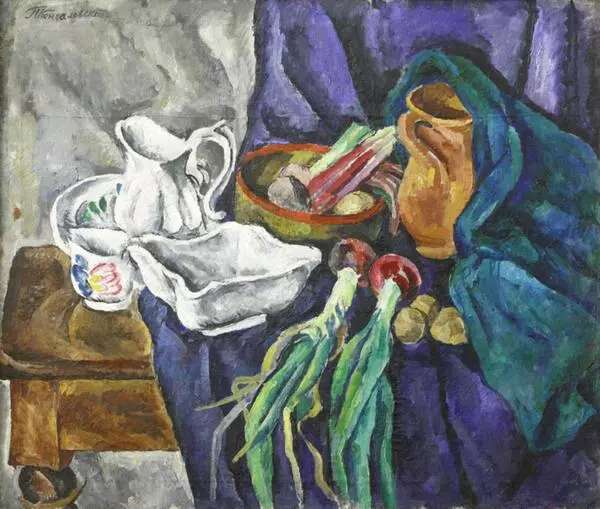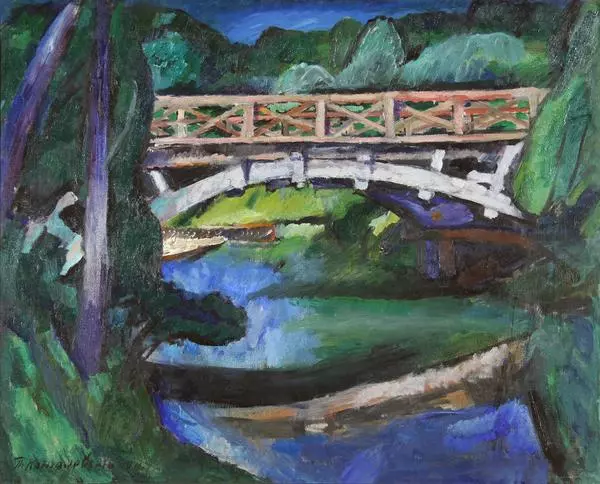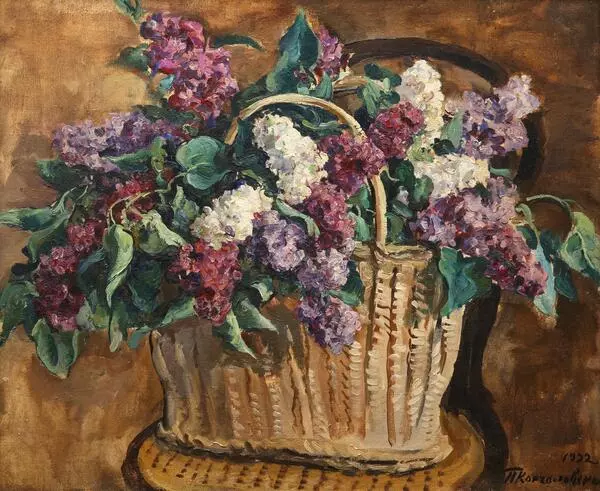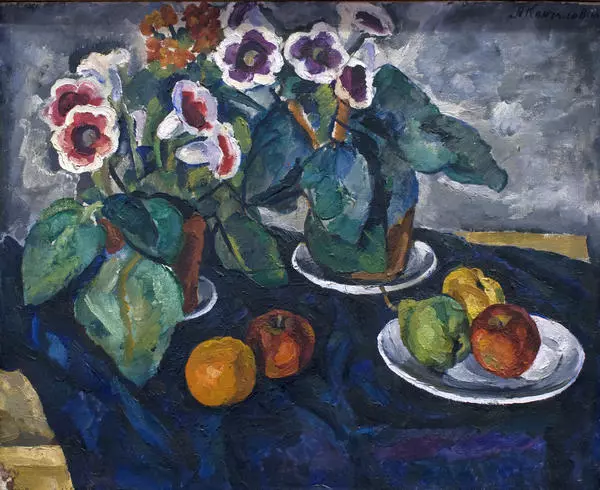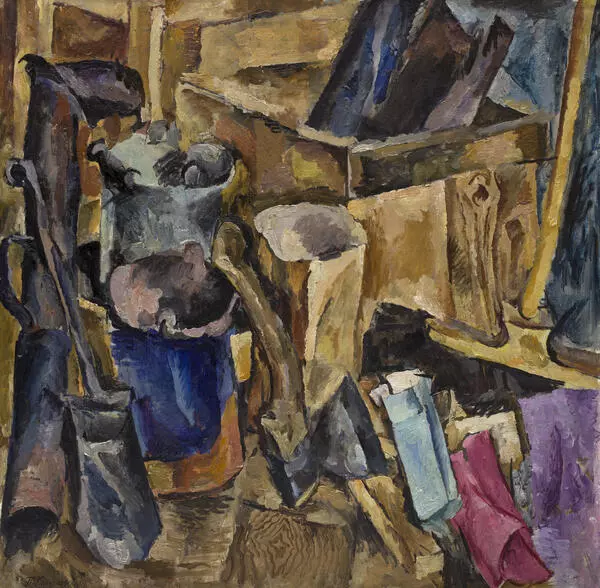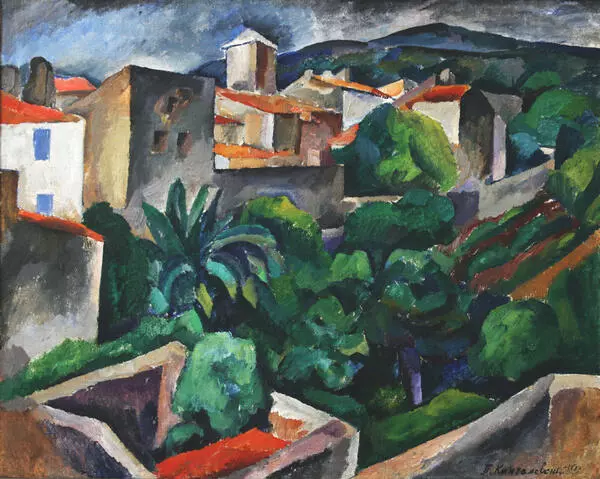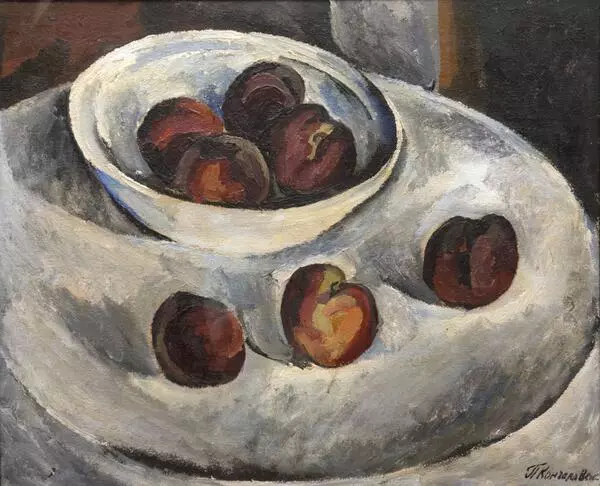Pyotr Petrovich Konchalovsky is a famous national painter, a prominent representative of the avant-garde of the first half of the 20th century. The artist himself claimed that painting for him was not just a source of joy, like any other hobby, but his life-blood.
Still-Life. Flowers clearly demonstrates how much Konchalovsky was interested in the characteristics of objects, accurately conveying different textures and shades. This feature of Pyotr Petrovich’s art manifested itself most clearly when he was a member of the Jack of Diamonds, a society of avant-garde artists.
The future famous artist was born on 21 February 1876 near Kharkiv, in the city of Slavyansk. His father — also Pyotr Petrovich — worked as a publisher and translator. He received his primary art education at the Kharkiv School. Then he moved to Moscow, where he attended evening courses at Sergey Grigoryevich Stroganov Academy of Arts and Industry.
There is evidence that Konchalovsky also studied at the Académie Julian in Paris and the Academy of Arts in St. Petersburg. The heyday of his art came in the early 20th century, when in painting there were appearing and developing new original trends. Pyotr Petrovich became one of the co-founders of the Jack of Diamonds.
Post-impressionist Paul Cézanne had an important influence on the formation of Konchalovsky’s own unique style. In a letter that Pyotr Petrovich wrote from Paris to his friend and fellow artist Ilya Mashkov, he noted that ‘the most valuable thing in art is preservation of a child’s sense that has not been clogged with conventions shaped over centuries…’, but it was Cézanne and van Gogh who helped him to understand that.
Cézanne was faithful to the principle of constructive colour, which can be traced in a lot of works by Konchalovsky. Each picture shows his analytical view of things, which he always stuck to. In Konchalovsky’s early still-lifes objects are depicted solid, in the style of Cubism and Fauvism. But in the post-revolutionary years, the artist was more inclined towards realism, took part in the stage design of operas in theatres and worked as a teacher at the Free Art Workshops.
Still-Life. Flowers clearly demonstrates how much Konchalovsky was interested in the characteristics of objects, accurately conveying different textures and shades. This feature of Pyotr Petrovich’s art manifested itself most clearly when he was a member of the Jack of Diamonds, a society of avant-garde artists.
The future famous artist was born on 21 February 1876 near Kharkiv, in the city of Slavyansk. His father — also Pyotr Petrovich — worked as a publisher and translator. He received his primary art education at the Kharkiv School. Then he moved to Moscow, where he attended evening courses at Sergey Grigoryevich Stroganov Academy of Arts and Industry.
There is evidence that Konchalovsky also studied at the Académie Julian in Paris and the Academy of Arts in St. Petersburg. The heyday of his art came in the early 20th century, when in painting there were appearing and developing new original trends. Pyotr Petrovich became one of the co-founders of the Jack of Diamonds.
Post-impressionist Paul Cézanne had an important influence on the formation of Konchalovsky’s own unique style. In a letter that Pyotr Petrovich wrote from Paris to his friend and fellow artist Ilya Mashkov, he noted that ‘the most valuable thing in art is preservation of a child’s sense that has not been clogged with conventions shaped over centuries…’, but it was Cézanne and van Gogh who helped him to understand that.
Cézanne was faithful to the principle of constructive colour, which can be traced in a lot of works by Konchalovsky. Each picture shows his analytical view of things, which he always stuck to. In Konchalovsky’s early still-lifes objects are depicted solid, in the style of Cubism and Fauvism. But in the post-revolutionary years, the artist was more inclined towards realism, took part in the stage design of operas in theatres and worked as a teacher at the Free Art Workshops.
